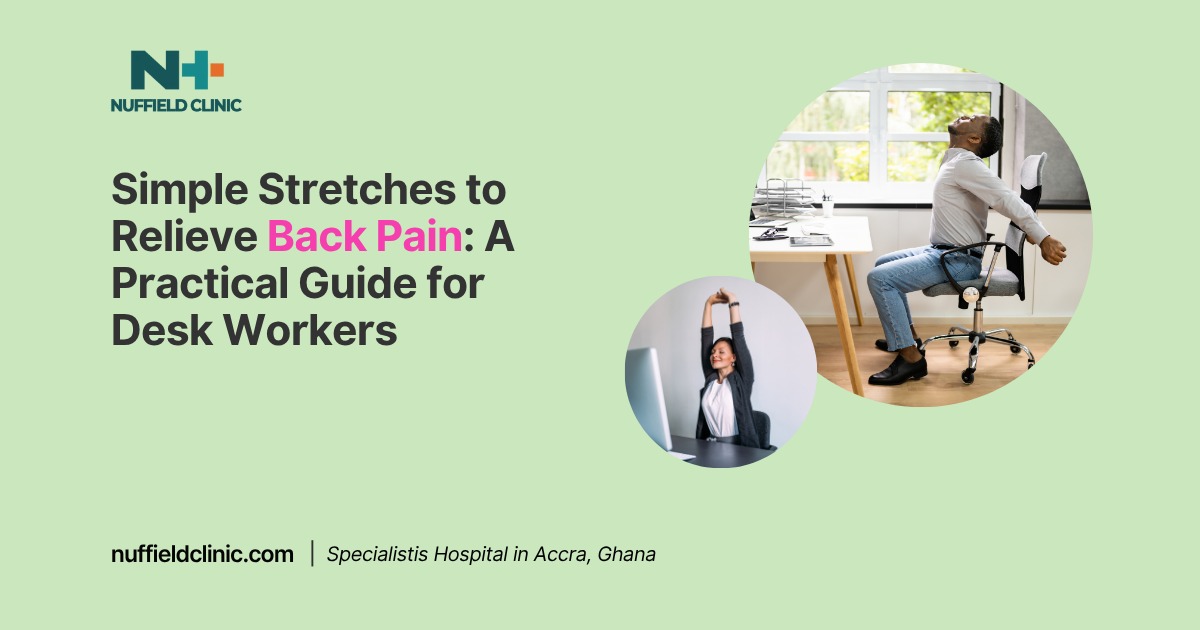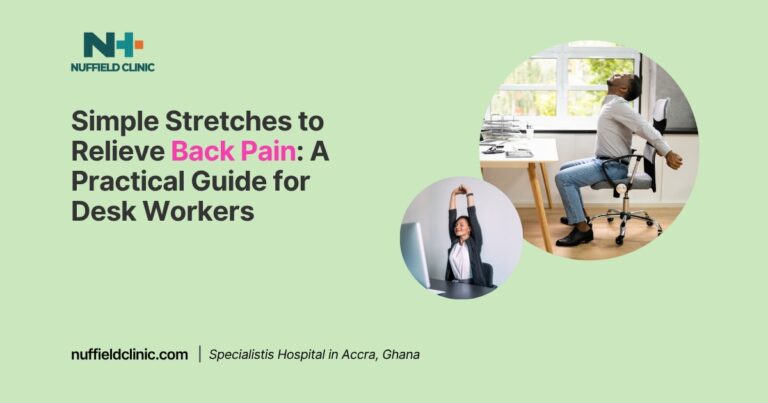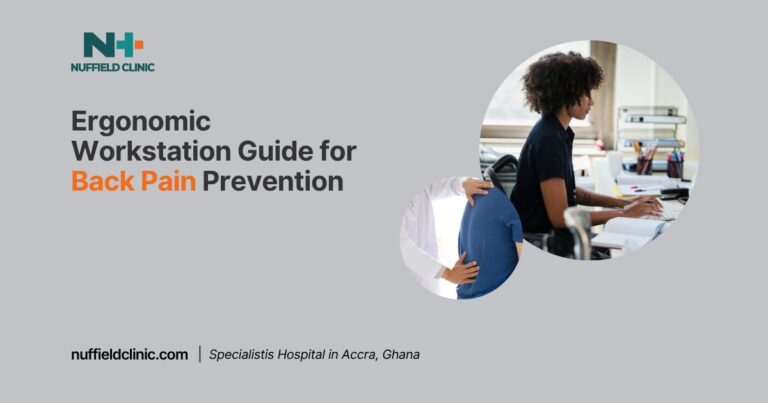Simple Stretches to Relieve Back Pain for Desk Workers

Do you regularly sit at your desk for hours? Have you been having back pain problems? Read this guide on practical solutions to avoid back pain for desk workers. Back pain is one of the most common complaints among people who spend long hours at a desk.
As someone with over 20 years of experience in musculoskeletal health, I have seen how prolonged sitting weakens muscles, strains posture, and contributes to chronic discomfort.
Fortunately, simple stretches to relieve back pain can be incorporated into the workday without requiring special equipment, making them accessible to office workers, writers, and anyone spending extended time seated.
Why Prolonged Sitting Causes Pain
Extended sitting places excess pressure on the spine and reduces muscle activity. Over time, this weakens the stabilising muscles of the back and hips, increases stiffness, and makes individuals more prone to neck, shoulder, and wrist pain.
Even with good ergonomics, the body is not designed to remain motionless for hours. Regular stretching and strengthening are essential to maintaining flexibility and reducing the risk of chronic pain.
General Stretching Principles
Consistency is key. Repeating stretches several times a day provides greater benefits than relying on a single exercise routine.
Movements should always be done gently, avoiding any forced range. Holding stretches for 20 to 30 seconds and coordinating with steady breathing helps reduce tension.
Most importantly, pay attention to how your body responds and stop if discomfort worsens.
Effective Stretches for Back Pain Relief
- Lower Back and Spine
Simple stretches to relieve back pain often target the lower spine, which bears the most strain from sitting. The knee-to-chest stretch is highly effective: lying on your back, gently draw one knee, then both, to the chest while pressing the spine toward the floor.
Rotational stretches, such as lying on your back with your knees bent and rolling them side to side, improve mobility and reduce stiffness.
The bridge exercise, where you lift your hips while tightening the core, strengthens stabilising muscles. Cat-Cow stretches, performed on hands and knees or seated at a desk, increase spinal flexibility.
- Upper Back and Neck
Tension in the upper back and neck is common with forward head posture at a desk. Shoulder blade squeezes strengthen postural muscles and reduce slouching.
The chin tuck is another simple movement that resets the neck by pulling it back into alignment. For muscle tightness, hold an upper trap or levator scapula stretch for 30 seconds on each side.
A thoracic extension, performed by leaning back over a low chair or simply arching the upper spine, restores mobility in the mid-back.
- Hips and Core
Tight hip flexors from sitting contribute to back discomfort. A standing lunge stretch, with one leg forward and the other extended back, gently releases this tension.
Strengthening the core with desk push-ups or bridges further supports the spine.
- Wrists and Hands
Although back pain is often the focus, wrists also suffer during long typing sessions. Simple wrist flexor and extensor stretches, the prayer stretch, and finger tendon glides can reduce stiffness and prevent repetitive strain.
Incorporating Movement Into the Workday
Simple stretches to relieve back pain are most effective when combined with frequent movement. Standing, walking, or stretching every 30 minutes promotes circulation and reduces pressure on spinal discs.
Performing a short routine in the morning and evening, such as those recommended by the Mayo Clinic, can reinforce healthy patterns.
Adjusting your workstation is also important. A supportive chair, lumbar cushion, and monitor at eye level reduce strain and make stretching more effective.
When to Seek Professional Advice
While most desk-related pain responds well to stretching and ergonomic changes, persistent or severe discomfort requires professional guidance. A physical therapist or healthcare provider can recommend safe exercises tailored to your condition. Contact Nuffield Clinic to book your consultation today.
Simple stretches to relieve back pain are a practical, accessible way to counteract the negative effects of prolonged sitting.
By combining targeted exercises for the spine, neck, hips, and wrists with regular breaks and ergonomic support, desk workers can reduce pain and maintain better posture throughout the day.
Consistency and mindfulness are the foundations of long-term musculoskeletal health.







